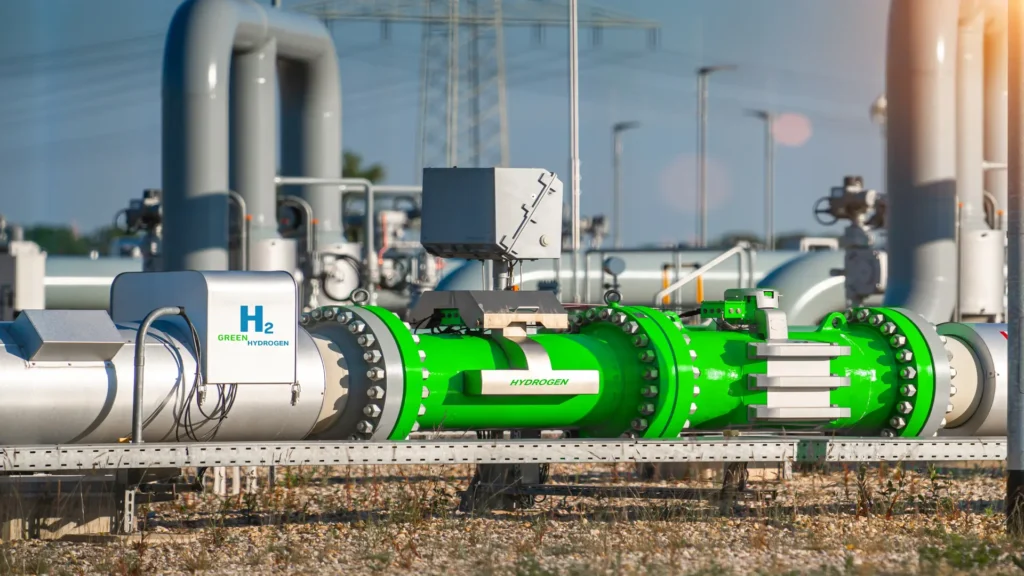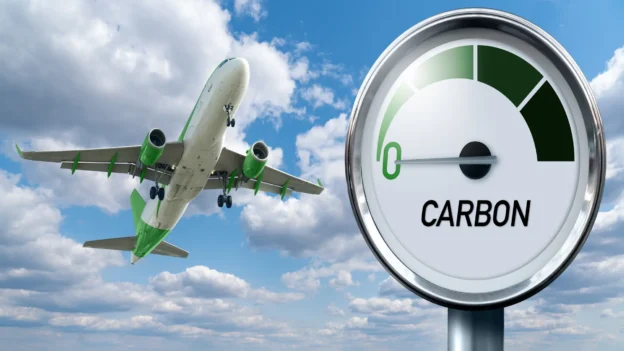Currently, the decarbonization of the midstream sector is an environmental necessity, and also an opportunity to improve operational efficiency and open new business avenues. This sector, which is responsible for the transportation, storage, and distribution of hydrocarbons, faces the challenge of adapting to a world that is increasingly aware of climate change. CO2, Under this context, it is important to address the following question: How is the midstream sector preparing for process decarbonization?
The need to reduce greenhouse gas (GHG) emissions is driving companies in the sector to look for decarbonization technology and strategies to operate more sustainably. In this article, we outline the advances in decarbonization in the midstream sector, analyzing the main strategies being implemented to reduce GHG emissions and how to optimize the sector with solutions to build a more sustainable future.
Main strategies for decarbonization of the midstream sector
Carbon Capture and Storage (CCS)
Carbon capture and storage (CCS) is emerging as an innovative and promising decarbonization technology to reduce greenhouse gas emissions during the transportation, storage, and processing of oil and natural gas.
What is CCS?
The Global CCS Institute (Carbon Capture and Storage) is an international think tank whose mission is to accelerate the deployment of Carbon Capture and Storage (CCS), a significant technology in achieving climate neutrality and thus climate change.
CCS is a two-step process
- Storage: Captured CO2 is transported to deep subway geological formations, such as saline aquifers or depleted oil and gas reservoirs, where it is safely stored for thousands of years. The global carbon dioxide storage capacity for CCS projects is approximately 2,500 gigatons, equivalent to more than 100 years of global CO2 emissions.
- Capture: This harmful gas emitted during the processing of oil and natural gas is separated from the flue gas using different techniques, such as amine absorption or membrane absorption. It is estimated that CCS could capture and store up to 70% of global CO2 emissions from fossil fuel combustion.
Carbon Capture and Storage (CCS) is presented as a fundamental organization in decarbonization and building a more sustainable future for new generations. Carbon capture and storage technology has seen a steady increase in both interest and adoption in recent years. As CCS progress continues to grow, the Institute aims to play an important role in accelerating this process globally.
Electrification with renewable energy
Electrification of processes such as oil and natural gas pumping can reduce GHG emissions. Companies invest in building new electrical facilities and converting existing ones to electric power. For example, some oil and gas pipelines are being supplied with electricity using solar and wind power, which significantly reduces carbon emissions.
Optimizing energy efficiency
Improving energy efficiency in midstream operations helps reduce GHG emissions. Companies implement measures such as automating processes, using more efficient control technologies, purchasing and upgrading equipment.
Transportation of renewable gases
The midstream sector is also exploring the transport and storage of renewable gases such as hydrogen and biogas, which can help reduce dependence on fossil fuels and GHG emissions.
Other decarbonization strategies
- Offsetting emissions: Companies in the sector can offset their GHG emissions by investing in projects that reduce emissions in other parts of the world.
- Research and development: Companies invest in R&D to find new decarbonization technology and midstream solutions.
- Collaboration: Companies in the sector collaborate with governments, NGOs, and other stakeholders to develop and implement decarbonization strategies.
Examples of technology implementation
Companies such as Shell and ExxonMobil are already implementing CCS projects in their midstream facilities, marking a path toward a cleaner future.
Equinor, the Norwegian energy company, is investing in the electrification of its midstream operations, significantly reducing GHG emissions.
Kinder Morgan, one of North America’s largest energy infrastructure companies, is implementing energy efficiency initiatives in its midstream operations, optimizing energy use and reducing its environmental footprint.
Optimizing midstream operations
Optimizing midstream operations has become a priority for companies seeking to improve efficiency, reduce costs, and minimize their environmental impact. This section of the article focuses on the various strategies and technologies that are driving this optimization, highlighting their importance for sustainability and competitiveness in the energy sector.
Strategies for optimizing operations
Improving energy efficiency
One of the most effective ways to optimize midstream operations is to improve the energy efficiency of equipment and facilities. This includes:
- Equipment upgrades: Replacement of older compressors, pumps, and other equipment with more efficient models that consume less energy and produce fewer emissions.
- Energy management systems: Implementation of advanced energy management systems that monitor and optimize energy use in real time, identifying opportunities to reduce consumption and improve efficiency.
Implementation of digital technologies
Digitalization is revolutionizing the midstream sector, providing tools for optimizing midstream operations. Some key technologies include:
- Sensors and IoT (Internet of Things): Installation of sensors throughout the midstream infrastructure to collect real-time data on equipment performance, operating conditions, and emissions.
- Data analytics and AI (Artificial Intelligence): Use of advanced data analytics and artificial intelligence algorithms to interpret collected data, identify patterns, and predict problems before they occur.
- Control systems and automation: Implementation of automated control systems that adjust operations in real time to maximize efficiency and minimize emissions.
These new technologies improve operational efficiency and help identify and reduce GHG emissions.
Reducing methane emissions
Methane is a potent greenhouse gas and its reduction is crucial to the sustainability of the midstream sector. Strategies to reduce methane emissions include:
- Leak detection and repair: Implementation of leak detection and repair (LDAR) programs using advanced technologies such as drones and infrared cameras to quickly identify and repair methane leaks.
- Best operating practices: Adoption of best operating practices that minimize emissions during natural gas transportation (See Video) and storage, such as the use of sealed valves and compressors.
These solutions are significant in optimizing midstream operations and reducing environmental impact. Below is a video in relation to the topic discussed, courtesy of: CNA Insider.

Decarbonizing transportation towards zero emissions.
Hydrogen infrastructure development
The development of infrastructure for transporting this gas is crucial for the transition to cleaner and more sustainable energy sources. First, specific pipeline networks are being designed and built, using advanced materials and engineering techniques that are resistant to the high reactivity of H2.
Green hydrogen, produced by electrolysis of water using renewable energy, is a promising solution for decarbonization. In addition to the construction of new infrastructure specifically for this purpose, midstream companies are studying alternatives for the use of existing pipelines to transport H2.
Figure 1 shows a pipeline transporting green hydrogen for clean electricity, solar and wind power installations.

These pipelines must be made of materials resistant to hydrogen-induced embrittlement to prevent leaks and ensure safety. In addition, the implementation of compression and storage stations is essential to maintain efficiency and continuity of supply, allowing effective distribution from production centers to consumption points.
Conclusions
Decarbonization of the midstream sector is a comprehensive process that requires the adoption of renewable energies, the implementation of carbon capture and storage technologies, the improvement of energy efficiency, and the reduction of methane emissions. Digitalization and the development of hydrogen infrastructure will also play a crucial role in this transformation, with a strategic approach and the use of decarbonization technology, the midstream sector can contribute significantly to a more sustainable future.
As the industrial sector moves forward, it is important that companies continue to innovate and collaborate to meet the challenges of climate change and seize the opportunities that arise on the path to sustainability with midstream solutions.
Find out how the midstream sector is leading the transition to a more sustainable future!
References
Own source

